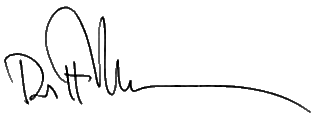|
Dear Readers,
This issue is once a medley of topics, hopefully something of interest for everyone!
Quite a bit has been going on "behind the scenes" concerning J.UCS. Let me summarize some of the facts that make J.UCS unique, first:
(a) J.UCS was one of the earliest electronic journals (the test issue appeared in 1994, the first full volume in 1995).
(b) J.UCS has been appearing since then with at least 12 issues per year, and it is published also in a printed form after the end of a year (the printed version has to be purchased at cost).
(c) J.UCS is truly open access: there is no charge neither for publishing nor reading (or downloading) the contributions on the web.
(d) Every paper is reviewed by at least 2, usually 3 or 4 referees. Only papers of high quality are accepted.
(e) J.UCS is both indexed by ISI and The Web of Science.
(f) J.UCS has an impact factor of 0.572, a five-year impact factor of 0.597 (Source: ISI Web of Knowledge).
(g) It has a readership exceeding 80.00 different readers and has over 600.000 down-loads a year. At, say, 100 papers a year this means that each paper is downloaded 6.000 times on the average, and downloaded only because title and abstract sounded appealing to the user. Hence the impact of a publication in J.UCS is significant.
(h) J.UCS has a variety of outstanding features, like for searching, geographical mash-ups, links into the future etc.
The J.UCS team with its more than 300 editors is proud of this and is determined to keep J.UCS going strong, with a very wide scope, good reputation and free publishing and reading.
Well, it is the latter point that has required some re-thinking. With monetary restrictions on all fronts it seemed impossible to have all the load on the shoulders of only three organisations. Hence for some time we have now been working on setting up a larger "J.UCS consortium" of between 7-12 organisations, sharing the financial and working burden. I am happy to report that we have been successful and are nearing the final stages of forming such a consortium. The new consortium will take over as of January 1, 2012, with a board consisting of all Editors-in-Chief (each consortium member is entitled to nominate one) and the three founders (Cris Calude, Arto Salomaa and myself). I am taking this opportunity, having now been emeritus for 2 years, to step down as Managing Editor-in-Chief to make room for new blood: Professor Christian Gütl, from the same institute I belong to, will take over this position and hence will also be chairperson of the board.
Page 1527
I will remain on the editorial board, Dana Kaiser will remain editorial assistant, so the transition will be smooth and J.UCS will be able to continue with even better support than ever.
I will fill you in on details later this year. However, if a university or institute in one of the countries not yet represented in the consortium (in Europe particularly from UK or France), or from Australia, Canada and Japan is still interested in joining the consortium, please do let me know: hmaurer@iicm.edu. Due to the size of the consortium the input of each new member is more than moderate, but being member brings a number of advantages in addition to the prestige gained.
Enough on this restructuring! Enjoy reading the following papers! Do send us further good papers, and consider joining the editorial board if you are tenured Associate Professor or above and have a good publication record.
Cordially,

Hermann Maurer, Managing Editor
Graz University of Technology, Graz, Austria
Email: hmaurer@iicm.edu
Page 1528
|
